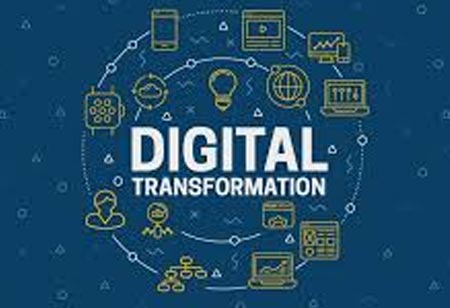THANK YOU FOR SUBSCRIBING
Key Trends in Retail Digital Transformation
In response to COVID-19, shops are developing adaptive business models ranging from contactless services to cost-cutting tactics.

By
Apac CIOOutlook | Wednesday, August 04, 2021
Stay ahead of the industry with exclusive feature stories on the top companies, expert insights and the latest news delivered straight to your inbox. Subscribe today.
In response to COVID-19, shops are developing adaptive business models ranging from contactless services to cost-cutting tactics.
FREMONT, CA: Digital transformation is accelerating at unprecedented speeds across the global retail industry due to the ongoing COVID-19 epidemic, requiring retailers to design adaptive, composable business models to scale in disruptive contexts.According to the survey, the crisis has also highlighted the importance of technology in the industry: over two-thirds of retail CIOs say their relationships with their CEOs have improved last year since CIOs have assisted in guiding their businesses through substantial disruption.
The pandemic altered people's buying habits for the rest of their lives.So here are some significant themes to consider when you make retail technology investments and other strategic decisions moving forward to create outstanding customer experiences and, as a result, certain client trust.
Touchless interactions
"Touchless" interactions are "safe," physical-contact-free exchanges that take place throughout the customer's whole buying experience. However, consumers today demand shops to incorporate sanitization methods into their operations and hygienic and straightforward ways to research, acquire, and consume items.
Touchless experiences must provide a level of personalization that makes customers feel that businesses are genuinely committed to them by taking the time to learn about their requirements and desires to offer rewarding customer experiences.
Fulfillment execution
Through real-time analysis and reconfiguration of inventory, personnel, and processes, fulfillment execution enables excellence in fulfillment operations across the retailer's physical and digital assets.As a result, inventory optimization, unified commerce experiences, and greater customer happiness are all made feasible, all of which add to the company's profitability.
Associated enablement and effectiveness
A positive consumer experience is dependent on a positive associate experience, making retail store associates critical competitive differentiators. As a result, frontline employees must become one of a retailer's most valuable investments.
The capacity to complete work obligations flexibly, reduce costs, and provide exceptional customer service is now more critical than ever.Retail digital workplace investments, particularly in physical store locations, have been proved to enhance sales and profitability, resulting in a significant competitive advantage over time.
Collaborative ecosystems
The COVID-19 problem has caused significant changes in customer behavior and purchase patterns, exposing flaws in established retail business review.Retailers can extend existing business capabilities, support new business models, offer new products and services, and ultimately satisfy evolving customer needs by participating in a collaborative ecosystem through partnerships with other retailers.
Cost optimization
Cost optimization is a business-focused, ongoing discipline that aims to reduce spending and costs while increasing the value of a company. It has become a fundamental component in many shops' "reopening playbooks" and operational models as a means of dealing with the extreme economic uncertainties brought on by the pandemic.
See Also: Top Digital Transformation Consulting/Service Companies in UK





